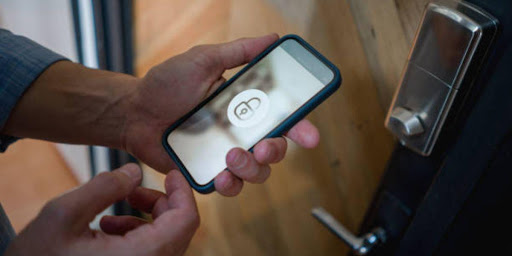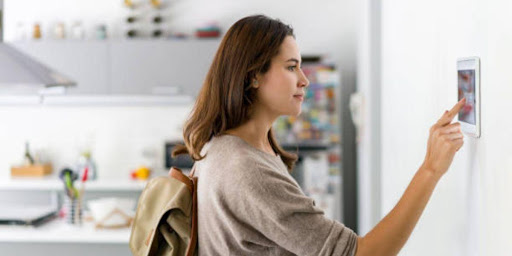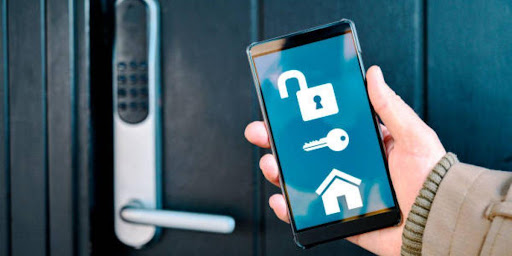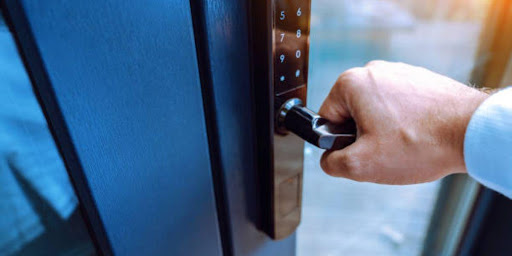Power Articles
Industry Elevating Content
The Role of Smart Doors in Modern Homes - Installation and Integration Tips

PowerArticles
Sept. 25th, 2023
In today’s ever-evolving world of home design and technology, the role of smart doors has become increasingly significant. For companies specializing in window and door installation, understanding the installation and integration of these intelligent entryways is crucial. Smart doors not only enhance security but also offer convenience and energy efficiency. In this article, we will explore essential tips and insights to help window and door installation companies stay ahead in the game by effectively incorporating smart doors into modern homes, ensuring seamless integration, and maximizing customer satisfaction.
Understanding Smart Doors
Smart doors refer to technologically advanced entryways that integrate various digital components to enhance security, convenience, and automation in modern homes. These doors can be controlled remotely through smartphones or other connected devices, offering homeowners greater control and accessibility.
B. Key components and features:
Smart doors typically incorporate a range of components, including smart locks, video doorbells, and access control systems. These components work together to provide remote locking and unlocking features, real-time video monitoring, and user-friendly access management. Biometric authentication, voice commands, and integration with smart home ecosystems like Amazon Alexa or Google Assistant are also common features.
C. Benefits of smart doors for homeowners:
- Enhanced Security: Smart doors offer advanced security features like real-time video surveillance, alerts for suspicious activity, and the ability to grant access remotely, bolstering the safety of the home.
- Convenience: Homeowners can lock or unlock their doors remotely, grant temporary access to guests, and receive notifications when someone arrives, all from their smartphones.
- Integration: Smart doors can seamlessly integrate with other smart home devices, creating a cohesive ecosystem that enhances home automation and energy efficiency.
- Peace of Mind: The ability to monitor and control the entrance to their homes remotely gives homeowners peace of mind, whether they’re at work, on vacation, or simply in another room.
5. Energy Efficiency: Some smart doors can optimize heating and cooling by detecting when doors are left open and adjusting the home’s climate accordingly.

Pre-Installation Considerations
Before embarking on the installation of smart doors in modern homes, window and door installation companies must carefully evaluate several key pre-installation considerations to ensure a seamless and satisfying experience for homeowners. This phase is crucial for understanding the unique requirements of each project and delivering a tailored solution. Here are the essential aspects to address during pre-installation:
Assessing the Homeowner’s Needs and Preferences
Understanding the homeowner’s specific needs and preferences is paramount. Engage in a thorough consultation to determine factors like security requirements, design aesthetics, and accessibility features. This assessment helps identify the type of smart door technology that best suits the homeowner’s lifestyle, such as keyless entry, remote access, or intercom systems.
Compatibility with Existing Home Automation Systems
Many modern homes already incorporate various smart devices and home automation systems. Compatibility with these existing setups is crucial. Prioritize systems that can seamlessly integrate with popular platforms like Google Home, Amazon Alexa, or Apple HomeKit. This ensures a cohesive and user-friendly smart home ecosystem.
Budget Considerations
Discussing budget constraints upfront is essential to manage expectations and provide suitable options. Different smart door technologies come with varying price ranges, and understanding the homeowner’s budget allows you to recommend cost-effective solutions without compromising quality or functionality.
Selecting the Right Smart Door Technology and Brand
Choosing the right smart door technology and brand requires extensive research. Consider factors like reliability, durability, and customer support. Opt for reputable brands known for their security features and innovation. Selecting the appropriate technology, whether biometric recognition, RFID, or Wi-Fi connectivity, depends on the homeowner’s needs and infrastructure.

Installation Process
Installing smart doors in modern homes requires careful planning and precise execution to ensure seamless integration. For companies specializing in windows and doors, mastering the installation process of smart doors is essential to meet the demands of tech-savvy homeowners. Here’s a simplified guide to the installation process:
A. Site Assessment and Preparation
Before diving into the installation, conduct a thorough site assessment. Ensure that the smart door system fits the door frame and aligns with the homeowner’s preferences. Verify the electrical and connectivity requirements to avoid any surprises during installation
.
- Ensuring Proper Fit and Functionality: Measure the door frame accurately to guarantee that the smart door components fit perfectly. Confirm that the chosen smart locks, handles, sensors, and cameras are compatible with the door design.
- Electrical and Connectivity Requirements: Check if the home has the necessary electrical wiring and connectivity infrastructure in place. If not, make a plan for installing them to power the smart door system.
B. Installation of Smart Door Components
The heart of a smart door system lies in its components. Properly integrate these components for optimal performance.
- Integration of Smart Locks and Handles: Install smart locks and handles according to the manufacturer’s instructions. Ensure they work smoothly and securely.
- Mounting of Sensors and Cameras: Position sensors and cameras strategically to cover key areas. Securely mount them while considering aesthetics and functionality.
C. Wiring and Connectivity
Address the power and connectivity needs to keep the smart door system running smoothly.
- Power Sources and Backup Solutions: Connect the system to a reliable power source, and discuss backup solutions with the homeowner in case of power outages.
- Wi-Fi or Bluetooth Setup: Establish a stable connection to the home’s Wi-Fi or Bluetooth network. Ensure that the smart door system can communicate effectively with the homeowner’s devices.
D. Testing and Calibration
Before concluding the installation, thorough testing and calibration are crucial to ensure everything operates seamlessly.
- Ensuring All Components Work Seamlessly: Test each component individually and as part of the entire system. Verify that the smart locks, sensors, cameras, and connectivity features function correctly.
2. Addressing Any Installation Issues: If any issues arise during testing, address them promptly to guarantee the homeowner’s satisfaction and the system’s reliability.

Integration with Home Automation Systems
Installing smart doors is not just about enhancing security and convenience; it’s also about seamlessly integrating them into the broader ecosystem of home automation. For companies specializing in windows and doors installation, understanding the nuances of integration is crucial.
Compatibility with popular smart home platforms:
When installing smart doors, it’s imperative to ensure compatibility with popular smart home platforms like Amazon Alexa, Google Assistant, and Apple HomeKit. These platforms act as the central hub for various smart devices in a home. Ensuring compatibility simplifies the user experience, allowing homeowners to control their doors alongside other connected devices.
Syncing with voice assistants:
Voice assistants have become an integral part of modern households. Smart doors should seamlessly sync with these voice-controlled assistants, enabling homeowners to lock, unlock, and monitor their doors using simple voice commands. This feature not only enhances convenience but also adds an extra layer of security.
App and remote control integration:
Most smart door systems come with dedicated mobile apps. Installers should educate homeowners on how to use these apps effectively. These apps allow users to remotely control their doors, receive real-time notifications, and grant access to guests when they’re not at home. Proper setup and guidance on app usage are essential.
Setting up automation routines and schedules:
One of the key advantages of smart doors is the ability to create automation routines and schedules. Installers should assist homeowners in configuring these routines. For example, doors can automatically lock at a certain time each night or unlock when the homeowner’s smartphone approaches. This level of automation enhances both security and convenience.

Conclusion
In conclusion, the incorporation of smart doors into modern homes is a significant advancement that enhances convenience, security, and energy efficiency. For companies specializing in window and door installation, embracing this technology is crucial to meet the evolving needs of homeowners. To successfully install and integrate smart doors, it’s essential to prioritize customer education, choose compatible devices, ensure robust cybersecurity measures, and offer reliable technical support. By following these tips, companies can not only stay competitive in the market but also contribute to creating safer, smarter, and more connected homes for their customers.
Published By
PowerArticles
Sept. 25th, 2023